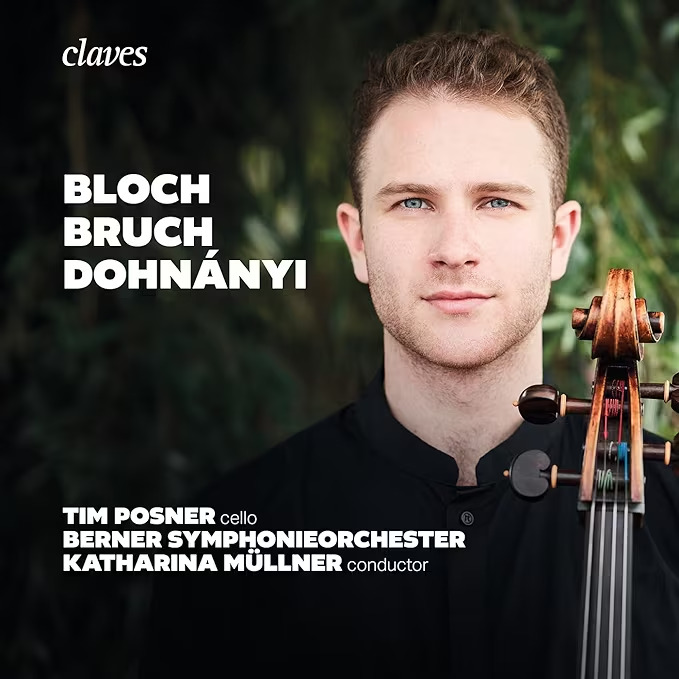 Bloch: Schelomo, Bruch: Kol Nidrei, Dohnányi: Konzertstück Tim Posner (cello), Berner Symphonieorchester/Katharina Müllner (Claves)
Bloch: Schelomo, Bruch: Kol Nidrei, Dohnányi: Konzertstück Tim Posner (cello), Berner Symphonieorchester/Katharina Müllner (Claves)
You know that some releases will be good within just seconds of pressing play. Here, the seductive, rich tone of Katharina Müllner’s Berner Symphonieorchester draws you in like a magnet, the string harmonics heard two minutes into Bloch’s Schelemo hitting you like a sharp poke in the ribs. And cellist Tim Posner sits so comfortably in the mix, sound engineer Johannes Kammann deserving a shout out – this is one of those rare recordings that sounds fabulous at any volume. Schelomo was first conceived as a vocal work, Bloch ultimately giving the voice of King Solomon to a solo cello. British cellist Tim Posner is magnificent throughout, railing against the world’s woes before collapsing into exhausted silence. Bloch’s scoring, though dense, never overwhelms the cello line, Posner’s dark, impassioned tone a perfect fit. If you’re new to the work, start here – this performance sent me down a Bloch rabbit hole and I’m now in love with his Concerto Grosso No. 1, an incisive, uplifting marvel. Following Schelomo with Bruch’s Kol Nidrei makes sense, Antonin Scherrer’s booklet essay revealing that Schoenberg wrote his own version “to annihilate with vitriol the sentimentality of Bruch’s cello.” A tad harsh; Bruch’s work doesn’t plumb the depths but it’s affecting, sincere music, written in 1880 after a commission from the Liverpool Jewish Society. Solo cello plays the role of cantor, mostly orating in Brahmsian style. Posner’s nobility and restraint are winning, and he’s beautifully accompanied – try the passage beginning five minutes, Bruch’s wind and harp writing looking ahead to Strauss.
The final work is a rarity, Dohnányi’s large-scale Konzertstück playing out like an extended single-movement cello concerto lasting 25 minutes. It’s music on the cusp (Dohnányi completed it in 1904), showing the influence of Brahms and Mahler, the cello writing lyrical and idiomatic. The first section’s whimsical slow waltz theme is an earworm, followed by a probing adagio and a brief scherzo section. The opening theme returns, and the calm close is blissful. It’s a real find. This is a terrific disc, and it’s already pencilled in on my ‘Best of 2024’ list.
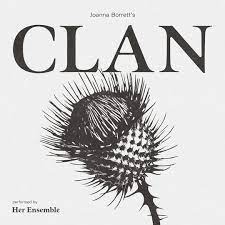 Joanna Borrett: Clan Her Ensemble/Joanna Borrett
Joanna Borrett: Clan Her Ensemble/Joanna Borrett
Clan is a ten-part suite for strings by cellist and composer Joanna Borrett. Ten concise movements follow the trials and tribulations experienced by a Scottish tribe, taking in reels and ceilidhs, betrayal and conflict. Borrett’s CV makes for interesting reading, with studies in Moscow, a spell as principal cello in the Scottish Baroque Ensemble and a detour into journalism, and Clan is an appealing work, designed for performance by a full string section or solo quintet. The music plays out like a ballet suite, a wistful introduction leading to a pithy, catchy reel lasting barely a minute and a euphonious celebration of unity, “Us”. Borrett’s language is tonal and accessible, the string writing alluding to a very English tradition. Think Holst or Warlock, in a good way.
Borrett’s concision is striking, with much incident packed into movements which rarely exceed three minutes; Clan lasts just over 19 minutes but feels much bigger. “Betrayal” and “Armour and Battlefield” take us into impressively astringent territory, the members of the all-female Her Ensemble whipping up a storm, and a final “Chant” has them doubling on wordless vocals before a solemn, downbeat close. Impressively engineered, Clan is available as a download and as sheet music. I also listened to the limited-edition vinyl and was wowed by the punch and impact of the string sound. Played here with plenty of flair, this recording was released to mark International Women’s Day. Her Ensemble will be performing it as part of concerts celebrating music written by female composers in Newcastle, Liverpool and Leeds in late April – do catch them if you’re nearby.
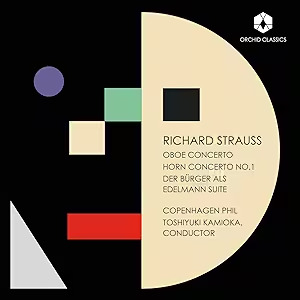 Strauss: Oboe Concerto, Horn Concerto No. 1, Der Bürger als Edelmann Copenhagen Phil/Toshiyuki Kamioka (Orchid Classics)
Strauss: Oboe Concerto, Horn Concerto No. 1, Der Bürger als Edelmann Copenhagen Phil/Toshiyuki Kamioka (Orchid Classics)
French Music for Two Pianos Charles Owen and Katya Apekisheva (Orchid Classics)
These two discs, released on Matthew Trusler’s quirky Orchid label, have been in the pile for a while so it makes sense to do them together. Orchid’s Beethoven symphony cycle, taped a decade ago in Copenhagen under conductor Lan Shui, is still one of my go-to sets, so it’s good to hear the same orchestra tackling an interesting Strauss programme under Toshiyuki Kamioka. Pittsburgh Symphony oboist John de Lancie found himself stationed as a corporal in Garmisch, Bavaria, in 1945, where the elderly Strauss was living. De Lancie befriended the composer and suggested that he write an oboe concerto. Strauss initially refused but soon set to work, and the concerto premiered in Zurich in February 1946. It’s a sweet-natured, lyrical work and oboist Andreas Fosdal’s performance is a delight. Strauss’s long cantabile lines are well-served and the orchestral playing is alert and lively. It’s often paired with the Horn Concerto No. 2, another nostalgic late work, though we get instead Jakob Kielding playing Strauss’s precocious Horn Concerto No. 1. This feels very much like a traditional 19th century concerto, formally inventive with three linked movements played without a break. Repeated listenings highlight the music’s charm and cleverness, Strauss sensing just how much the soloist can comfortably play before needing some recovery time, and do listen out for a foretaste of Don Juan’s big horn theme near the close of the finale. Martin Owen’s Chandos disc contains superb readings of both horn concertos, but Kielding’s playing makes this disc a keeper. The coupling is the suite from Der Bürger als Edelmann, better known here as Le Bourgeois gentilhomme, drawn from Strauss’s incidental music to the Moliere play which originally preceded Ariadne auf Naxos. Several sections quote from Lully’s original score, though the results lack the fizz of Stravinsky’s Pulcinella. It’s performed here with plenty of sparkle, the orchestral piano nicely present in the mix.
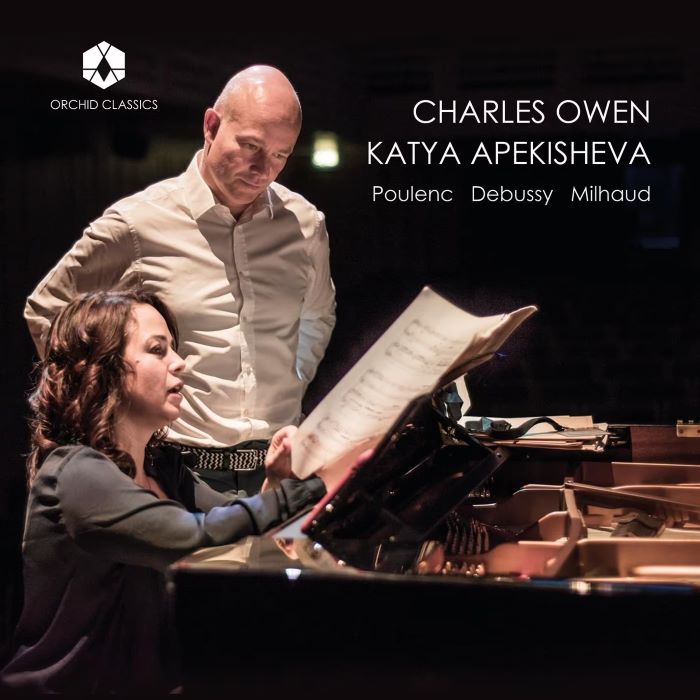 Pianists Charles Owen and Katya Apekisheva’s anthology of (mostly) 20th century French music is a joy, superbly performed and beautifully recorded. It’s been years since I’ve listened properly to Milhaud’s joyous Scaramouche. This was based on incidental music for two stage works, one of which was premiered at Paris’s Théatre Scaramouche, hence the title. The breezy outer movements glitter here, the final samba taken at a real lick, though it’s the central “Modéré” which stands out, played with tenderness and utter sincerity. Another treat is Ravel’s brilliant two-piano version of Debussy’s Nocturnes, Owen and Apekisheva’s performance full of light and shade. "Fêtes" is exhilarating, the nocturnal procession beginning on the very edge of audibility. If the final section of Respighi’s Pines of Rome was arranged for two pianos, it would sound like this. The rest of the disc is taken up by Poulenc. The little “Capriccio” and “L’embarquement pour Cythere” show the composer at his frothiest, and you’ll need cigars and cognac to fully appreciate the late “Elégie for two pianos. More substantial are the Sonata for Four Hands and Sonata for Two Pianos, from 1918 and 1953 respectively. The earlier work lasts less than six minutes, each pithy movement beautifully characterised here. The Sonata for Two Pianos is darker and more percussive, the opening bell sounds really ringing out in this performance. A superb collection, brilliantly recorded.
Pianists Charles Owen and Katya Apekisheva’s anthology of (mostly) 20th century French music is a joy, superbly performed and beautifully recorded. It’s been years since I’ve listened properly to Milhaud’s joyous Scaramouche. This was based on incidental music for two stage works, one of which was premiered at Paris’s Théatre Scaramouche, hence the title. The breezy outer movements glitter here, the final samba taken at a real lick, though it’s the central “Modéré” which stands out, played with tenderness and utter sincerity. Another treat is Ravel’s brilliant two-piano version of Debussy’s Nocturnes, Owen and Apekisheva’s performance full of light and shade. "Fêtes" is exhilarating, the nocturnal procession beginning on the very edge of audibility. If the final section of Respighi’s Pines of Rome was arranged for two pianos, it would sound like this. The rest of the disc is taken up by Poulenc. The little “Capriccio” and “L’embarquement pour Cythere” show the composer at his frothiest, and you’ll need cigars and cognac to fully appreciate the late “Elégie for two pianos. More substantial are the Sonata for Four Hands and Sonata for Two Pianos, from 1918 and 1953 respectively. The earlier work lasts less than six minutes, each pithy movement beautifully characterised here. The Sonata for Two Pianos is darker and more percussive, the opening bell sounds really ringing out in this performance. A superb collection, brilliantly recorded.
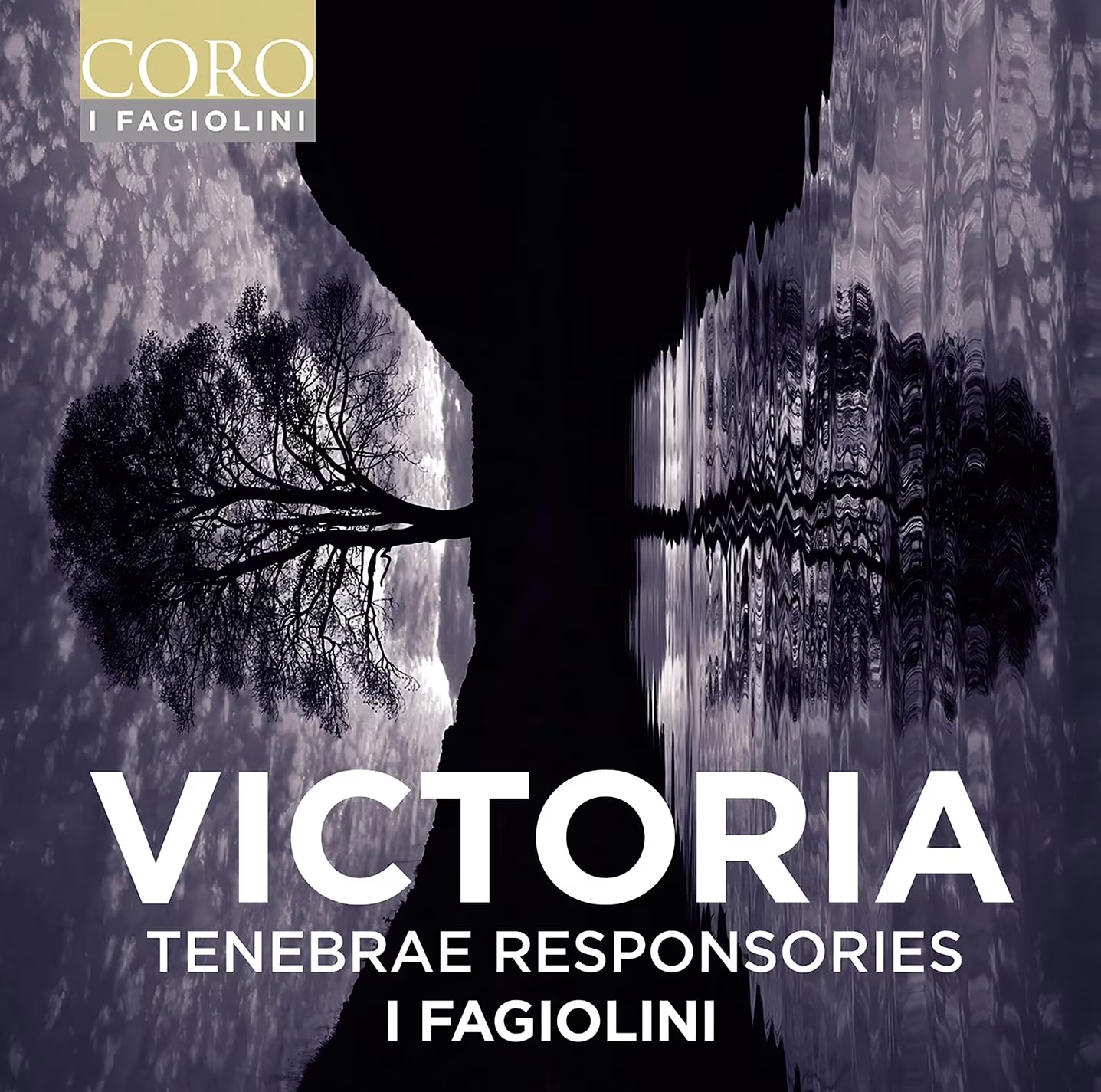 Victoria: Tenebrae Responsories I Fagiolini/ Robert Hollingworth (Coro)
Victoria: Tenebrae Responsories I Fagiolini/ Robert Hollingworth (Coro)
I Fagiolini, the vehicle for the musical imagination of Robert Hollingworth, has a long track record of re-imagining the old in new ways. With this album they do more of a restoration job, returning Victoria’s Tenebrae Responsories to the original pitch, a fourth lower than normally sung today, and thus casting fresh light on this masterful Renaissance choral music. Written in Rome for Holy Week in 1585, and capturing the darkness of the story at hand, the music at this pitch has a sombre hue, devoid of inapt spectacle or show, instead the epitome of musical humility.
This is pared-back in conception, in just four parts, and in some passages just two or three, sung in typical Fagiolini style one to a part. It makes for a very intimate listening experience, a world away from the flashy multi-choir music prevalent in Rome at the time (such as Benevoli’s Missa Tu es Petrus, Fagiolini’s last album). The textures are transparent – aided by the lovely acoustic of Milton Abbey in Dorset as captured by engineer Adrian Hunter – and the singing has an expressiveness that the flexibility of a vocal quartet allows. The intonation is, of course, flawless and the rotation of a cast of six singers gives a bit of variety between the numbers – although variety is very much not the point. This is a set of pieces that examine the same subject from a number of angles, but always with the main intention of being the conduit of the sacred texts. On the CD the music is broken up by Hollingworth reading poems from Christopher Reid’s Costa Prize winning collection A Scattering, memorialising the poet’s wife. Providing a kind of secular spoken liturgy, Hollingworth reads with a simple understatedness that matches the singing, although the contemporary, conversational tone is a world away from the dignified ritual of the Victoria. Bernard Hughes
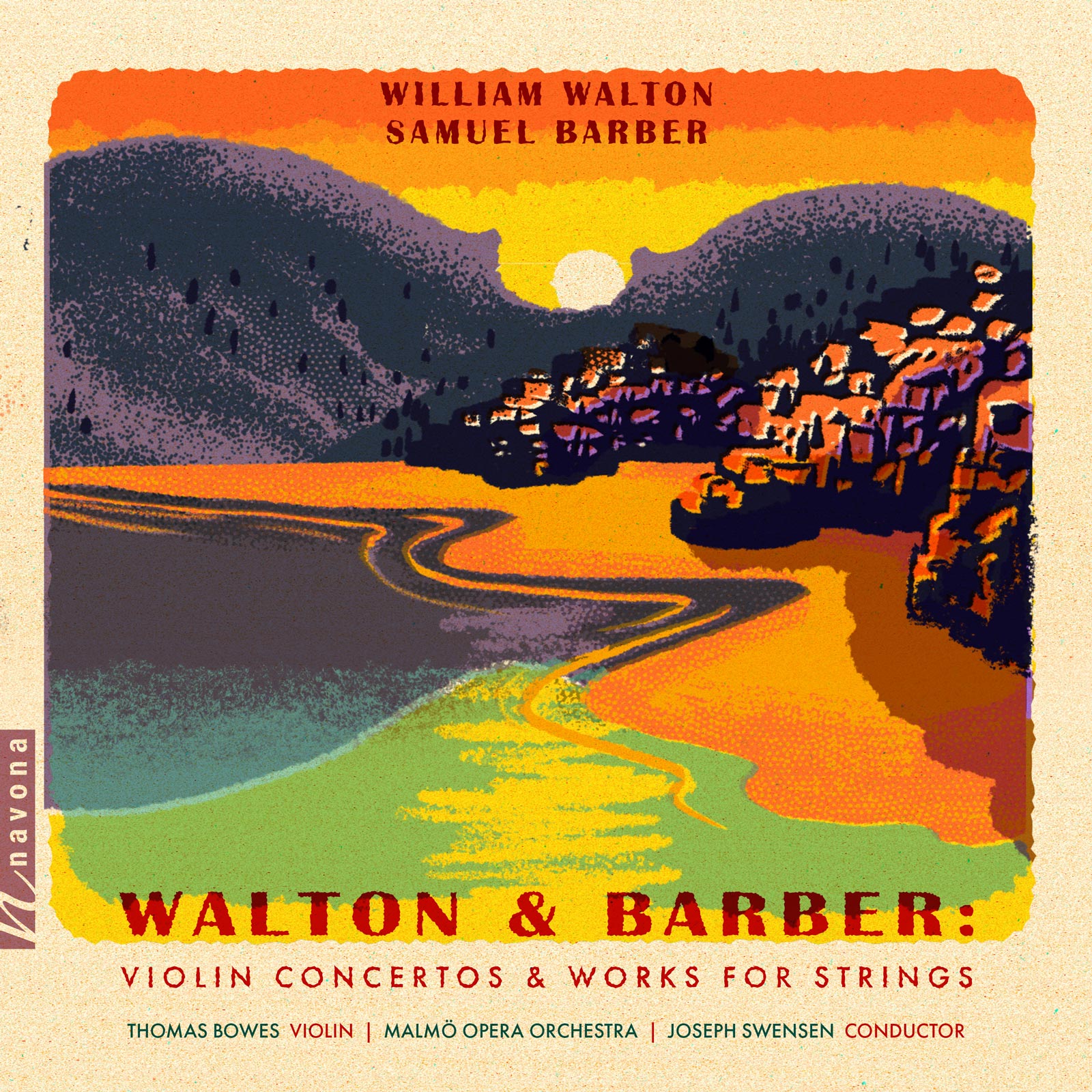 Walton and Barber: Violin Concertos Thomas Bowes (violin), Malmö Opera Orchestra/Joseph Swensen (Navona)
Walton and Barber: Violin Concertos Thomas Bowes (violin), Malmö Opera Orchestra/Joseph Swensen (Navona)
The Walton and Barber violin concertos make an interesting pair. The composers were near contemporaries and the pieces written within a couple of years of each other in the late 1930s. Both composers were preternaturally gifted and achieved success at a young age, and then ploughed a furrow for the rest of their lives which came increasingly to be seen as conservative and out of touch. Both concertos represent composers in the prime of their talents, combining intense expressiveness with nimble and idiomatic writing for their soloists.
They are presented here by Thomas Bowes in performances with the Malmö Opera Orchestra under Joseph Swensen, originally released on Signum in 2011 and now reissued on Navona. I loved Bowes’s playing in the rich first movement of Walton and the sparkling “Tarantella” second, inspired by Walton actually being bitten by a tarantula, has scurrying lines cut from the same cloth as the finale of the Barber. There is a return to seriousness in the third movement, with dialogues between the soloist and ensemble being given time to breathe, which give way to the most exquisitely-played passage of romance and yearning.
The Barber is one of my favourite concertos. The first movement eases into life as if mid-thought, and Bowes plays with a wispy elegance. There is a good forward momentum where some linger, and a real urgency in the orchestral playing – with a pleasingly audible piano. The second movement is gorgeous, and here has both vulnerability and inner steel. The finale is just a roast from beginning to end, Bowes flying at a million miles an hour and Swensen and the orchestra going along for the ride. It’s pretty thrilling. Good sleeve art too. Bernard Hughes














Add comment